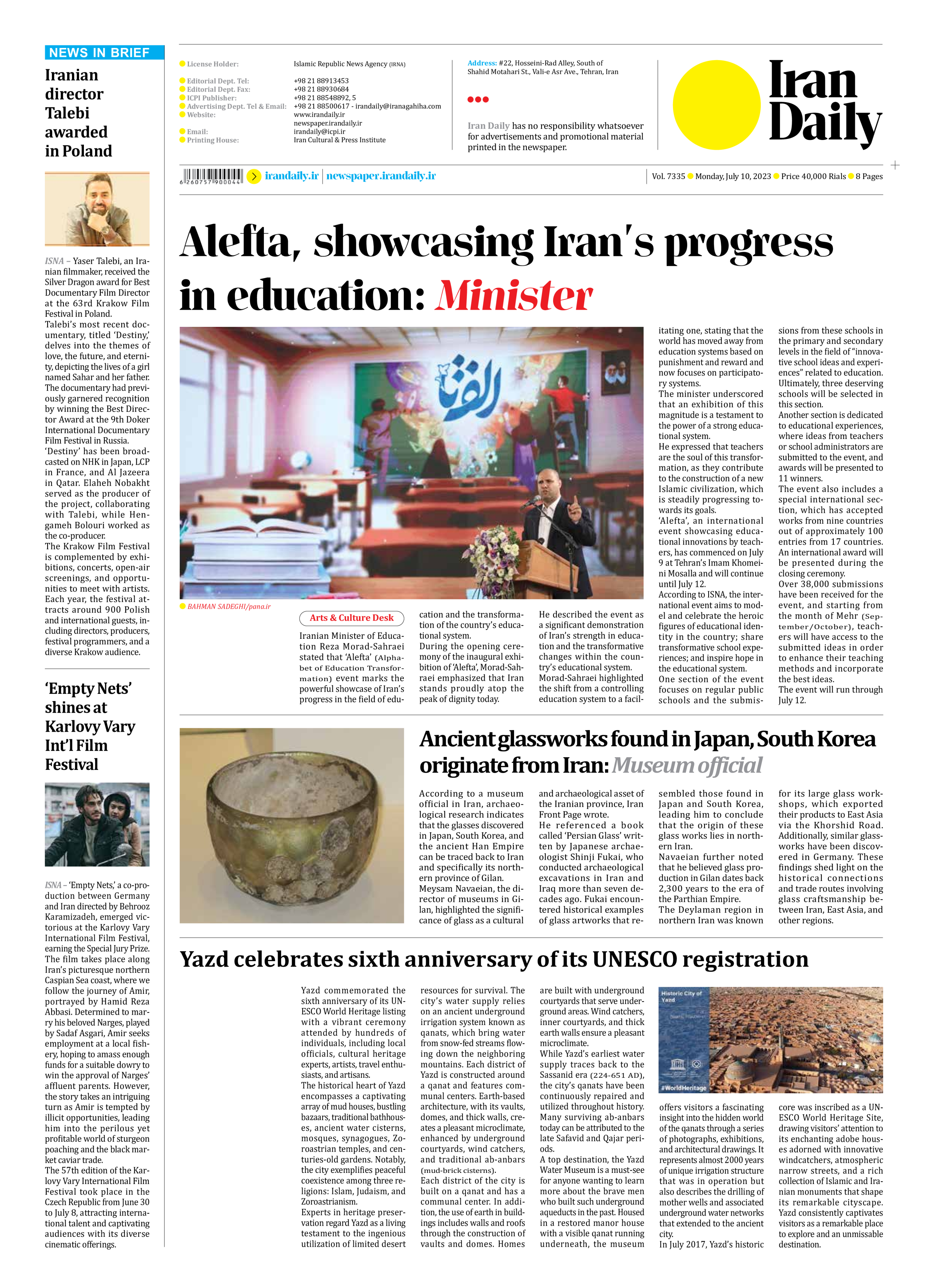
Ancient glassworks found in Japan, South Korea originate from Iran: Museum official
According to a museum official in Iran, archaeological research indicates that the glasses discovered in Japan, South Korea, and the ancient Han Empire can be traced back to Iran and specifically its northern province of Gilan.
Meysam Navaeian, the director of museums in Gilan, highlighted the significance of glass as a cultural and archaeological asset of the Iranian province, Iran Front Page wrote.
He referenced a book called ‘Persian Glass’ written by Japanese archaeologist Shinji Fukai, who conducted archaeological excavations in Iran and Iraq more than seven decades ago. Fukai encountered historical examples of glass artworks that resembled those found in Japan and South Korea, leading him to conclude that the origin of these glass works lies in northern Iran.
Navaeian further noted that he believed glass production in Gilan dates back 2,300 years to the era of the Parthian Empire.
The Deylaman region in northern Iran was known for its large glass workshops, which exported their products to East Asia via the Khorshid Road. Additionally, similar glassworks have been discovered in Germany. These findings shed light on the historical connections and trade routes involving glass craftsmanship between Iran, East Asia, and other regions.







